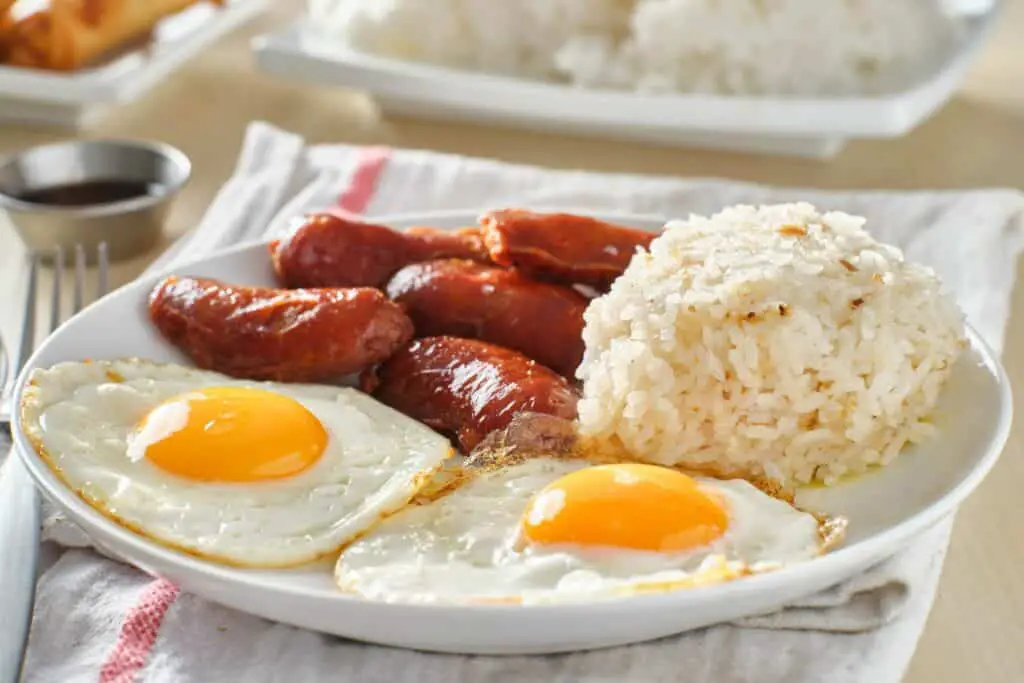
Some people eat dinner really early, around 5PM, while others don’t eat until past 8 PM or even midnight. What about the average filipino? Culturally, when do Filipinos normally eat dinner?
On average, dinner time is around 6 or 7 PM for many Filipino families. Eating after 7 PM is considered late for many traditionally Filipino families, especially since many begin their day early and have breakfast at around 7 AM.
Want to learn more about Filipino eating culture? Read on to find out more.
Dinner is Served at 6 PM
While breakfast in the filipino household is seen as the most important meal of the day because it provides the energy a person would need throughout the day, the food served at dinner often more elaborate.
In the traditional Filipino household, dinner is served early, usually around 6 pm. At that point, every member of the family is expected to be seated at the table. The table is set with plates, spoons, and forks as well as the “sawsawan” or condiments of choice.
Part of the reason why dinner is served early is because Filipinos start their day early, some as early as 4 or 5 am. Hearty meals like adobo, sinigang or nilaga are typically served for dinner. Dinner is a time for the family to bond and catch up with each other after a long day.
In modern times, especially for filipino families that have settled in western countries, it is not uncommon for dinner to be pushed until past 8 PM because that is when everyone is back home from work.
So although the traditional dinner time is 6pm and you will certainly see this in the Philippines, it is not the case when looking at filipino households abroad. Simply said, dinner time is when most family members are home to eat together, which further solidifies the notion that dinnertime is an important family tradition for filipino families.
Simply said, dinner time is when most family members are home to eat together
Breakfast is at 7AM
If you’re looking for breakfast in the Philippines, you can expect to find it served as early as 6 AM or 7 AM. This is because the day traditionally starts off early in a Filipino household. Many households I know have parents that get up at 3 or 4 AM due to either working early or because their commute to work is very far. Although this has been changing in recent years, breakfast still tends to be quite early for the average filipino family.

Another quirk of filipino breakfast is that in the philippines, the “taho man” comes around in the morning to sell taho. This is a man who is carrying the tofu, pearls and sweet sauce and walking around the neighborhood calling out “taho” to let people know that he’s around and that they can purchase taho from him. Children and even adults will often wait for the “taho man” to come by so they can have taho either with their breakfast, or after breakfast.
Ever wondered how many times filipinos eat in a day? This post has the answer.
What is a Filipino breakfast?
Filipino breakfast is quite diverse. Breakfast usually consists of rice, some type of meat, and eggs. When eating rice for breakfast, the “ulam” or main dish can vary from luncheon meat, to dried/smoked fish such as “tuyo” or “tinapa”.
Apart from rice, breakfast can also consist of pandesal (filipino brioche bun). Champorado, a type of chocolate porridge, is also a common type of filipino breakfast.
Breakfast is considered as the most important meal of the day so it is very hearty. Filipino moms are known to scold their children if they don’t eat breakfast.
How do Filipinos traditionally eat?
Filipinos have a traditional way of eating that involves using both their hands, or using a spoon and fork. Rice is usually served with every meal, and Filipinos love to eat with other people. They also love to eat with condiments, which can include soy sauce, vinegar, and chili peppers. The traditional Filipino diet is healthy and nutritious, and it is an important part of Filipino culture.
What is a typical meal in the Philippines?
A typical meal in the Philippines usually includes rice and “ulam”, which is the main part of the meal. Soupy main dishes include sinigang and nilaga, while vegetable main dishes include dinengdeng and pinakbet. Dry meats such as pork chop or filipino bbq, as well as fried chicken with blanched sweet potato leaves are also common. Lastly, meals are often served with condiments such as soy sauce, vinegar, and chili peppers. While typical meals differ in each region, these are some of the most commonly seen items on a Filipino dinner table.
Every filipino meal includes rice
In the Philippines, rice is more than just a side dish – it’s a dietary staple. At every meal, you’ll find a steaming pot of rice front and center, with other dishes served on the side. And while other cultures might enjoy a bowl of rice as a simple accompaniment to their meal, Filipinos take things one step further by making rice the star of the show. Even dishes like lugaw (a type of congee) or champorado (chocolate rice porridge) are made primarily from rice – proof that this humble grain is an essential part of Filipino cuisine. So next time you’re sitting down to a Filipino feast, don’t be surprised if the mound of rice on your plate seems larger than usual – because in the Philippines, every meal starts and ends with rice.
We filipinos love our condiments
As any Filipino knows, food just isn’t the same without a bit of sawsawan, or condiments in english. Whether it’s a tangy vinegar dip or a savory fish paste, these condiments add an extra dimension of flavor to every meal. In fact, it’s not unusual to see a small plate of sawsawan on the table, alongside the main dishes. Of course, there are many different kinds of sawsawan to choose from. One of the most popular is bagoong, a pungent fish paste that is often used as a dipping sauce. Others include vinegar with fresh chopped garlic, soy sauce with vinegar, and patis (fish sauce). No matter what your preference, there’s sure to be a sawsawan that will suit your taste. So go ahead and enjoy your food with a little bit of Filipino flavor.
Did you know filipinos love eating with their hands? Click here to find out why.

